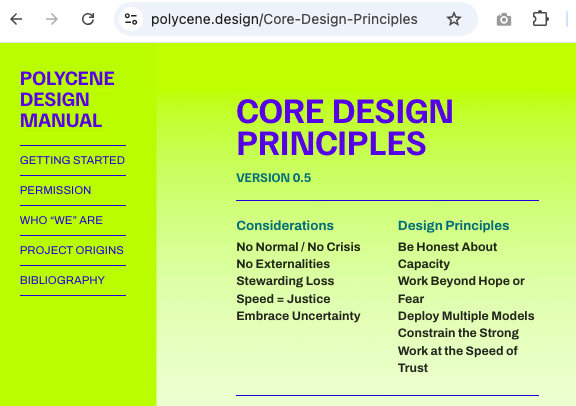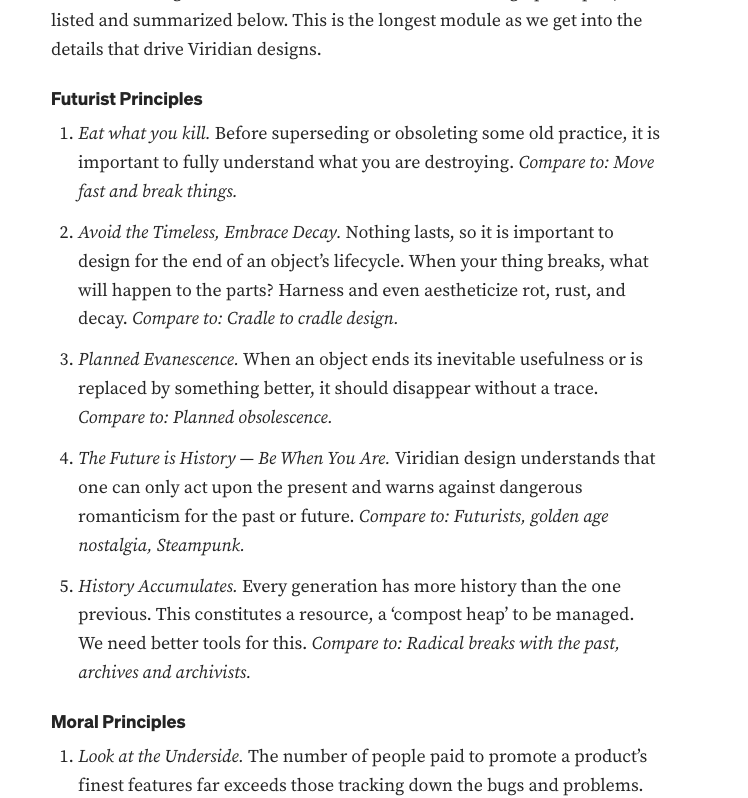I often see that the goals of design principles are associated with decision-making. Design principles help the team make right decisions, in different ways, and in different use cases and business scenarios.
Katie Wishlade wrote in this Clearleft post—”With Citizens Advice, we wanted our design principles to be a tool for making decisions.” (See the story here.). More recently, Ha Phan wrote in their Substack post—the guiding principles for product and design.

Design principles are not about the decisions
I think about the goal of design principles differently. To enable design-making is not the primary goal here.
Principles are about the complicated and subjective enablers in the organizations or in specific teams.These are more about the sentiment, the unsaid and the defaults of why we work and how we work in a certain way, the confidence-inspiring triggers that help us do our job. These are about the undocumented boundaries that keep us informed about the directions and the paths.
Take an example of an architecture team who say that their principles are about the rhythm, emphasis, and unity. It is about life of the occupants, of the architects and designers, of the space and of community, and of their collective sense (an example).
In digital product design, we should aspire to establish the higher order principles—beyond looking at these as enablers for decisions. There are organizations who continue to build and ship wonderful products even in the absence of design principles—they are making decisions even without the principles.
The primary goal of principles is more about the higher value culture of who we are and how we respond in certain situations—for the context or the patterns in similar or related work situations, using our judgment, and for the organization’s belief systems. The dots that we connect to make decisions are either internalized because of the culture and practices, or the path to connect those dots is clear because of the patterns in our work—these are culture-driven and not principles-driven.
For example if I say that one of our design principles is—message first in the interaction design. It does not mean that we should find ways to make decisions while designing interactions. This principle establishes the broader canvas for the team for how we think, how we prioritize and why, knowing the trade-offs, and this is how it makes sense.
Let’s see a couple of examples.
Polycene design principles
I like how they think so meta about their work and life for the larger goals, by Polycene.

Veridian design principles
This is yet another excellent example of how organizations think about the principles—the Veridian design principles.

There can be an argument that product design principles cannot be so meta—the teams cannot afford it. Of course the use cases are different, the stakes are different, and the needs and goals vary.
For our defaults and the sentiment
Principles build our defaults, the unsaid possible boundaries, the undocumented rules that we might need to follow because these defaults are set around a certain belief system. These bring a joy to be working in such a sentiment—our collective energy and the vision.
Ha write in their post—”Guiding principles are a way to crystallize your intentions, conviction, and what lines you won’t cross,” and I completely agree with them on this part.
Principles build our capacity. They give us strength, and the assurance. When we look at the design principles for something beyond the decision-making tools—principles are a great source of joy. At work and even outside of work.
Decisions are not the goals of design principles.
